a. Will my family eat it?
b. Will it grow with minimum fuss here?
c. Is it a space hog or will it provide me with maximum food output with minimum space?
d. Does it taste better fresh fresh, not normally available or is very expensive?
e. Is the store bought / non organic version normally high in pesticides?
Don't feel like playing my Q&A game then let me give you some common, mostly annual veggies that meet many of the above criteria.
1. Beans: easy to grow, you can plant 2-4 inches apart. Fresh beans are available abundantly during the summer and pole beans can be trellised. Also, it's one of the easiest plants from which to save seed.
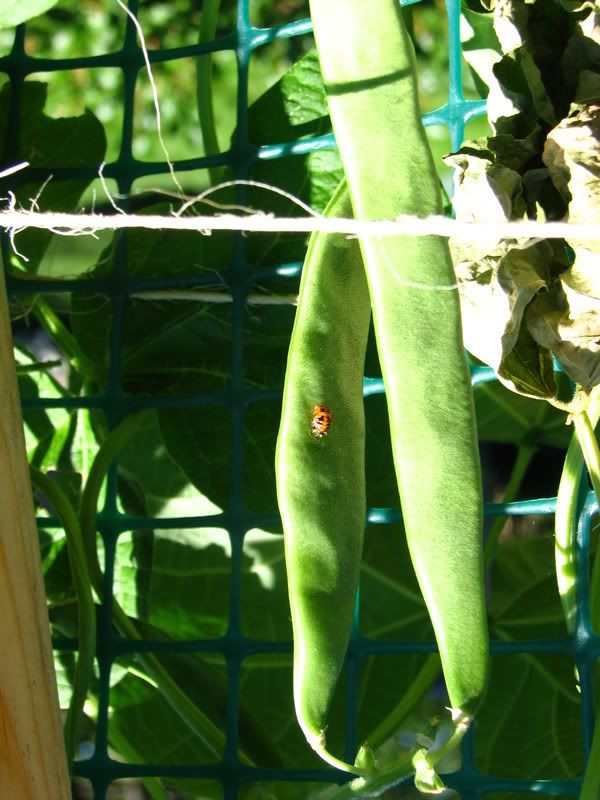
Sideways picture 'Hunter' bean with broad pods and a ladybug.
2. Peas: See above and add that freshly shelled peas are an exquisite taste that you have to experience to believe. I experience it seldomly as my kids eat most of them.

Glowing peas
3. Roots: carrots, turnips and beets. They don't take up much space and their growing requirements are meagre - a bit of sun, a bit (not too much) fertility and adequate watering. Carrot*, turnip and beet tops are also edible so eat your thinnings. You can often get two crops in a year too. Carrots are one of the dirty dozen food that has a high pesticide residue to boot.

Turnip 'orange jelly' I think it's called and a golden beet by the looks of it beside dandelion?
4.Greens: lettuce, kale, spinach and the like are easy to grow tucked in between plants as they appreciate a little coolness in the summer months. They are not high in calories but superstars when it comes to providing you green vitamen vitality! Also on the dirty dozen list.
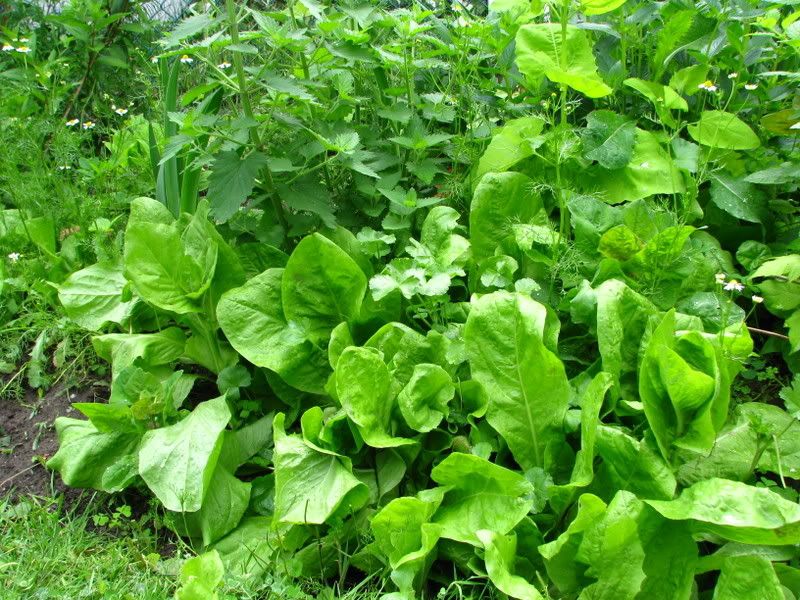
Self sown sugarloaf chicory
5. Peppers, especially bell peppers, tomatoes and potatoes are all sprayed within an inch of their life. Thankfully they'll all grow in containers. Just choose shorter varieties unless you have really big containers as indeterminate tomatoes are impressively large by the end of the season and bit tops usually mean big bottoms, ie the roots. If you have the space, potatoes are quite fun to grow. Kids enjoy helping plant the tubers and then dig up the treasures at harvest. Growing your own will also allow you to experience a diversity of varieties that is just not available at the grocery store.
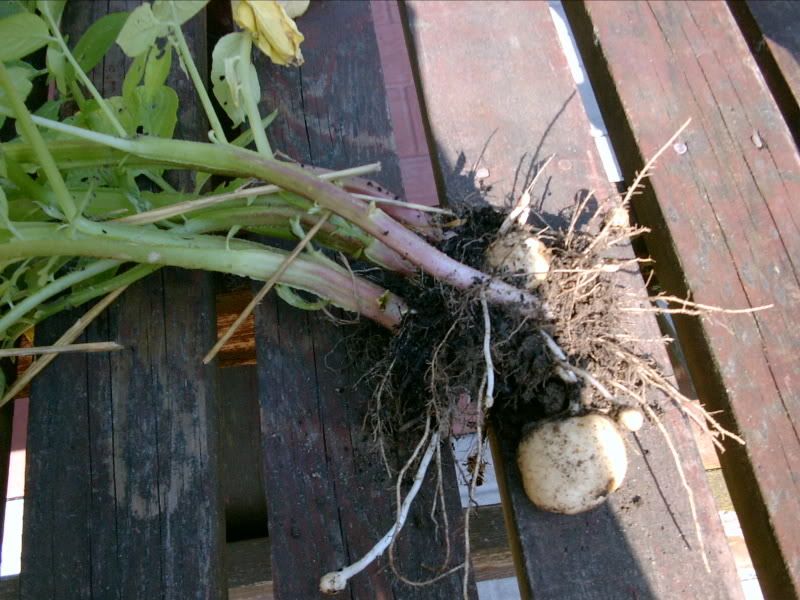
Baby potatoes, the early crop.
Have a bit more space, then consider:
6. Strawberries and other soft fruit like grapes whose thin skins easily absorb pesticide residues.
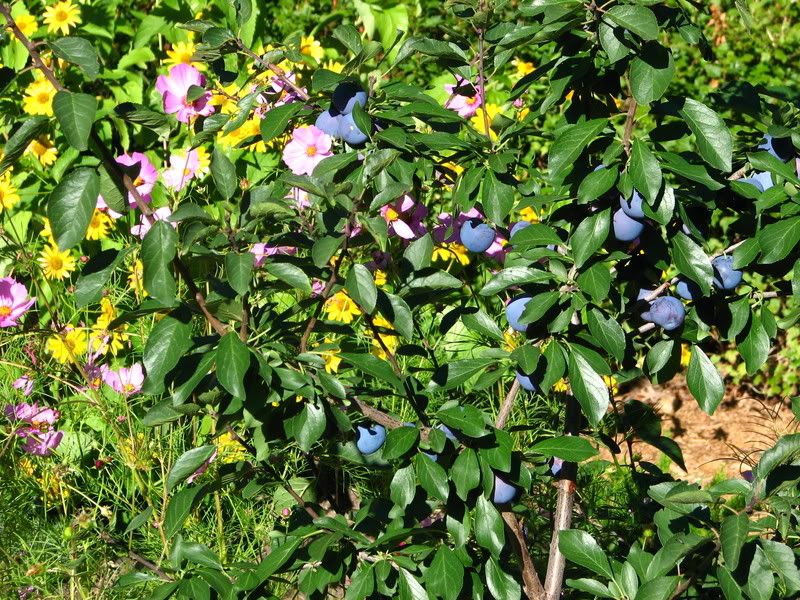
Plums and cosmos happy together.
7. Cucumbers and squash whose rampant vines can be trellised for cleaner harvest, better air circulation that cuts down on diseases, and of course to save on room. Many kinds grow well in containers too.
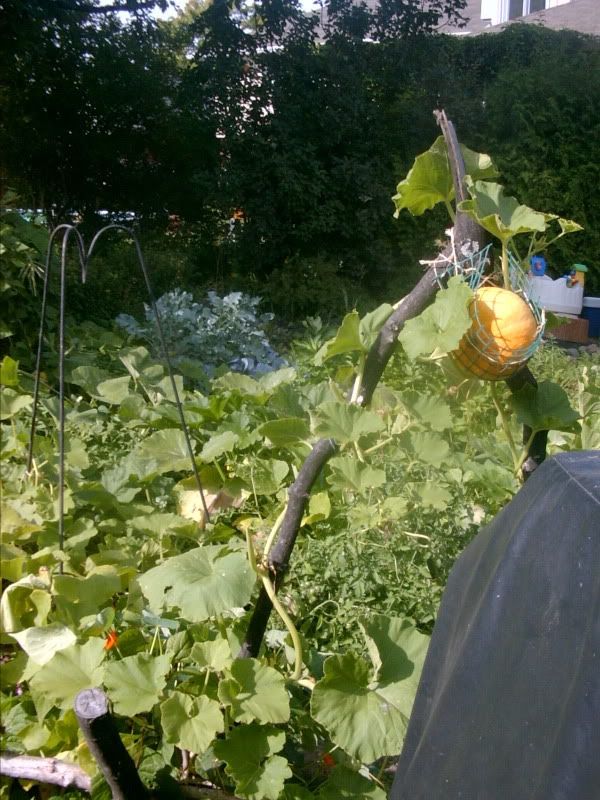
Pontimarron squash I believe.
Even more space? Here are some high calorie crops to add to the mix:
8. Onions and leeks are both recommended by Jeavons, author of 'How to grow more vegetables,' the biointensive method.

Yummy onions... pictures of leeks lacking due to leek moth. I hope they enjoyed them.
9. Other roots like parsnip and sweet potato. Short season sweet potatoes will grow very well here with clear plastic mulched beds. Some have success in containers too.
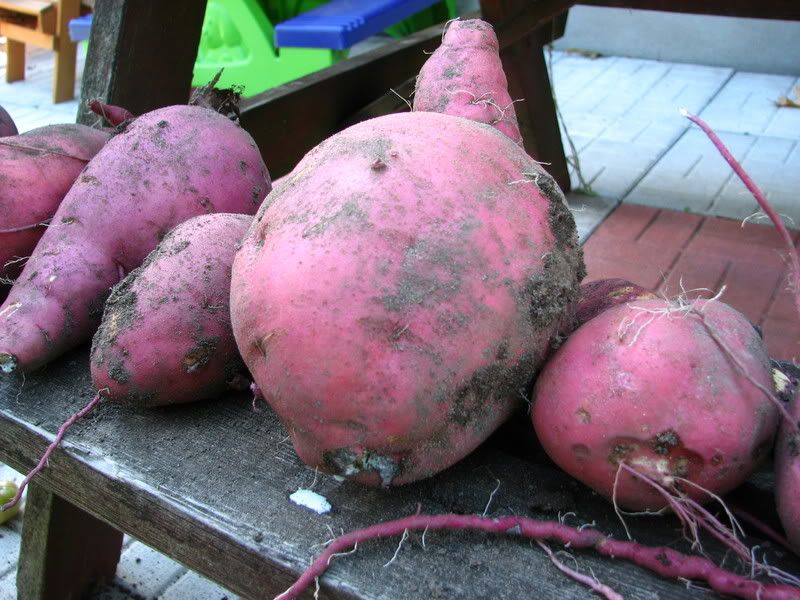
Super delicious sweety 'Georgia Jet'
10. Grains and more pulses like lentils, chickpeas and dried beans. Combined with wheat, hulless barley, amaranth, and corn, you will get a very healthful meal.

Various dried legumes: peas, chickpeas, and beans
And my recommendation.
11. Cabbage fun to grow and surprisingly delicious fresh. It also keeps well in the winter in the back of my fridge. I've put it last as it is a space hog though I commonly space cabbage and broccoli only 12 inches apart and they grow smaller but sizeable heads in fertile soil.
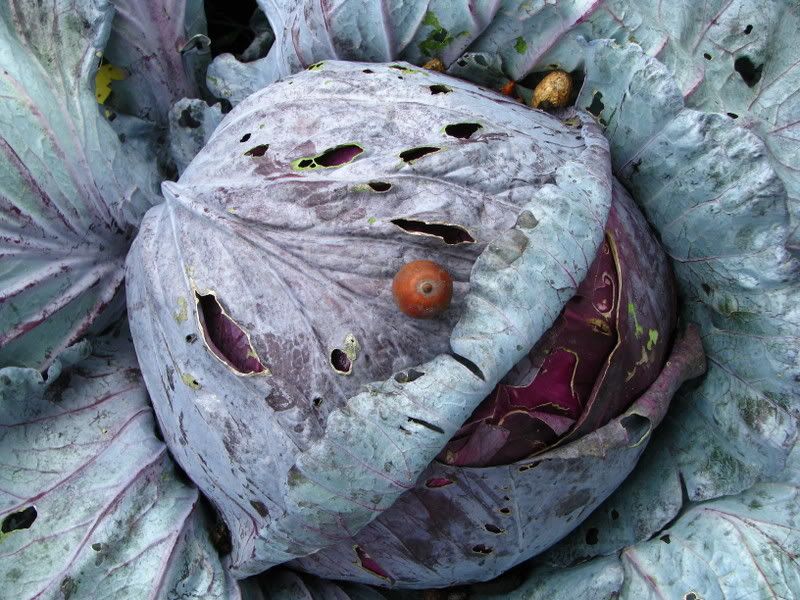
Yes, I really love this picture. (It's been posted before...)
12. Lots of other veggies of course.
Enjoy and remember, Seedy Saturday with its seed trading table is coming up soon.

2 comments:
I love your information and pictures too! You make me excited to get started figuring out what I'm going to plant this year.
But you have no pictures of tomatoes - my favorite. Right now I'm trying to figure out what I have room for because HALF of my garden ends up being tomatoes.
Thanks for a great post!
Marc
Do you have some pea varieties that you would recommend? Last year was my first year growing peas so I played it safe and just grew sugar snap peas - which were so delicious. I'd like to branch out into shelling peas/snow peas. Thoughts?
Post a Comment